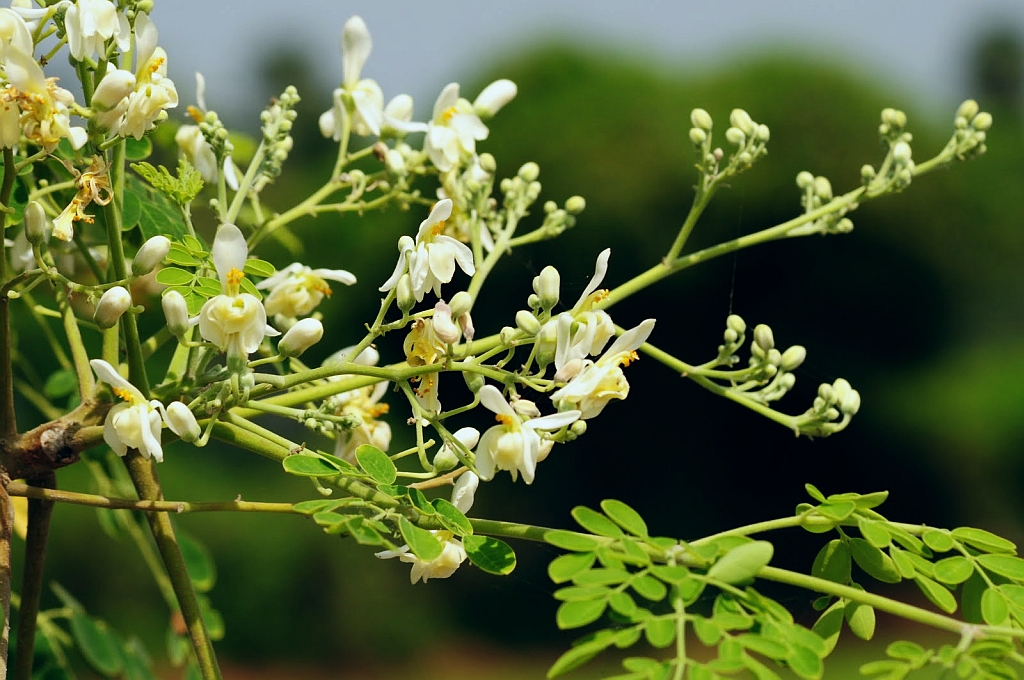 M.K. Adegun, O.J. Ayodele
M.K. Adegun, O.J. Ayodele
Department of Animal Production and Health Sciences, Nigeria
Department of Crop, Soil and Environmental Sciences Ekiti State University, Ado-Ekiti, Nigeria
Key words: Moringa oleifera, Organic manure, Spacing, Biomass yield.
Abstract
The envisaged demand for Moringa oleifera plant parts to fulfill its multipurpose functions can only be met when production is based on improved agronomic recommendations. Seeds of moringa were sown on the Teaching and Research Farm, Ekiti State University, Ado-Ekiti at 30×40 and 60×80 cm spacing as main plots while cow dung and poultry droppings were compared to a control as subplots. The treatments were combined as a 2×3 factorial and replicated four times in a randomized complete block design. The manures were applied at 20.0 metric tons per ha in three splits at 0, 6 and 12 weeks after planting (WAP).  Plant height, stem girth and fodder yield were measured at 16, 20 and 24 WAP. The plants were significantly taller and with smaller stem girth at 30×40 cm than 60×80 cm spacing. Manure application slightly increased plant height but the plants had significantly higher stem girth. The effect of manure was similar at the two spacings but showed the superiority of poultry dropping compared to cow dung. Biomass yield was higher at 30×40 cm spacing while the response to manure application was significant (P=0.05). Poultry dropping gave significantly higher biomass yield at 30×40 and 60×80 cm spacings. The significant fertilizer value showed that poultry droppings should be used for the cultivation of moringa, especially when the close spacing of 30×40 cm is adopted.
Plant height, stem girth and fodder yield were measured at 16, 20 and 24 WAP. The plants were significantly taller and with smaller stem girth at 30×40 cm than 60×80 cm spacing. Manure application slightly increased plant height but the plants had significantly higher stem girth. The effect of manure was similar at the two spacings but showed the superiority of poultry dropping compared to cow dung. Biomass yield was higher at 30×40 cm spacing while the response to manure application was significant (P=0.05). Poultry dropping gave significantly higher biomass yield at 30×40 and 60×80 cm spacings. The significant fertilizer value showed that poultry droppings should be used for the cultivation of moringa, especially when the close spacing of 30×40 cm is adopted.
Get the original articles in Source: Volume 6, Number 6, June 2015 – IJAAR
Journal Name: International Journal of Agronomy and Agricultural Research (IJAAR)
Published By: International Network for Natural Sciences
Related Post: Response of a maize or dry bean intercrop to maize density and dry bean arrangement under rainfed conditions – IJAAR
